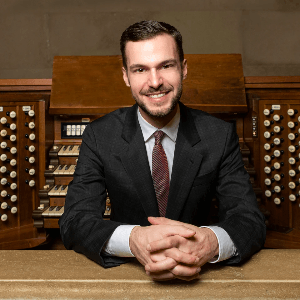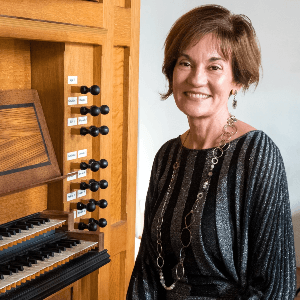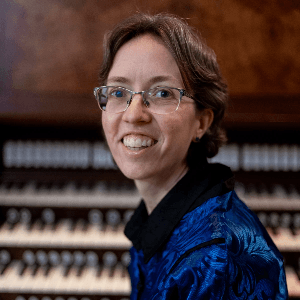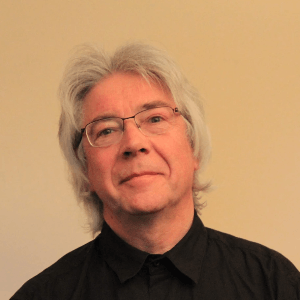
Morning Workshops 2025
Monday October 13–Friday October 17
REGISTER HERE
NOTA BENE
The workshops in Backa Church and Älvsborg Church will begin at 8:30 and end at 11:00 to allow students to return to the centre for the lunchtime concerts. All others begin at 9:00 and end at 11:30, unless otherwise stated.
I-1.
Johann Sebastian Bach:
Eighteen Chorales
Ludger Lohmann
Monday-Wednesday, October 13-15, 8:30-11:00
Söderling organ (1868/Åkerman & Lund 1994)
Besides the obvious parameters of performance, the course will look at theological implications of Bach's treatment of the chorales: which concrete verse of the chorale did Bach have in mind? How did he respond to details of the text with details of motives, harmony, musical-rhetorical figures, perhaps even number symbolism?
EDITIONS
Breitkopf or Bärenreiter.
Ludger Lohmann

I-2.
Johann Sebastian Bach:
Trios and Eight Preludes and Fugues
William Porter
Monday-Wednesday, October 13-15, 8:30-11:00
Hammarberg organ (1959)
William Porter will guide the participants through the trio repertoire of Johann Sebastian Bach and his circle. From the trios of Krebs and his contemporaries to the trio sonatas of Bach, this repertoire challenges and rewards players at all levels of skill and experience. We will focus upon developing habits of technique that can support musical gesture and shape, encouraging rhetorical listening and performing. We will take a similar approach for the eight short preludes and fugues, which represent examples of organ music aimed at the beginner, yet abounding in musical substance. In addition to performing these works, we will also explore how they can serve as models for improvisation.
REPERTOIRE LIST
Trios of free choice by Johann Sebastian Bach, Johann Ludwig Krebs, Homilius, et al.
J. S. Bach:
Eight Preludes and Fugues
William Porter

I-3.
17th Century Masterpieces from Hamburg and Lübeck
Bine Bryndorf
Monday-Wednesday, October 13-15, 9:00-11:30
North German Baroque organ by GOArt (2000)
In this workshop, we will focus on three generations of north German composers who either worked or–most likely–studied in Hamburg. One work of each composer is selected as particularly representative or visionary. However, it is also possible to choose other works by these four composers, both free and chorale works.
COMPOSERS / EDITIONS
Jakob Praetorius:Variations on “Vater unser im Himmelreich”
Schott (Beckmann)
Matthias Weckman:Magnificat II. Toni – four verses
Bärenreiter (Werner Breig)
Heinrich Scheidemann:Praeambulum in G, WV 73
Breitkopf (Pieter Dirksen)
Dietrich Buxtehude:Passacaglia in d, BuxWV 161
Broude Trust (Kerala Snyder/Michael Belotti) or Breitkopf (Harald Vogel)
Bine Bryndorf

I-4.
Franz Liszt and Julius Reubke:
Two Visionaries of the 19th-century German Organ Art
Nathan Laube
Monday-Wednesday, October 13-15, 9:00-11:30
Lundén organ (Lundén 1909/Grönlund 2002/Rieger 2019)
Franz Liszt's years in the “Bach-City” of Weimar witnessed the composition of many of his greatest works for keyboard. Through his development of the symphonic poem parallel to his pivotal engagement with the organ, the horizons of organ composition in 19th-century Europe expanded rapidly, resulting in the works at the locus of our study:
Franz Liszt:
Fantasie und Fuge über den Choral Ad nos, ad salutarem undam (1850)
Präludium und Fuge über den Namen BACH (1855)
Variationen über das Motiv von Bach: Weinen, Klagen, Sorgen, Sagen (1862)
Julius Reubke:
Der 94ste Psalm: Sonata für Orgel
We will explore the historical context, structure, and practical performance considerations (tempo, articulation, registration, etc.) of these complex works in depth.
Nathan Laube

II-1.
Arvo Pärt and Olivier Messiaen:
Two Visionaries of the 20th Century Organ Art
Kimberly Marshall
Thursday, October 16, 8:30–11:00
Friday, October 17, 9:00–11:30
Hammarberg organ (1968)
This workshop will focus on movements by Olivier Messiaen and Arvo Pärt, discussing their use of organ sound to create distinctive textures and timbres.
REPERTOIRE LIST
Arvo Pärt:
Olivier Messiaen:
Movements from Les Corps Glorieux
I Subtilité des Corps Glorieux
II Les Eaux de la Grace (both in Volume 1)
VI Joie et clarté des Corps Glorieux (Volume 3)
Alphonse Leduc publisher.
And other works by Pärt or Messiaen.
Kimberly Marshall

II-2.
Rachel Laurin and Max Reger:
Character Pieces
Isabelle Demers
Thursday-Friday, October 16-17, 9:00–11:30
Lundén organ (1909)
After writing a number of works for virtuoso organists, both Max Reger and Rachel Laurin realized the importance of writing shorter, easier works for everyday use. These workshops will discuss their respective collections of character pieces - among them Reger's opus 59, 63, and 65, as well as Laurin's Seven volumes of Twelve Short Pieces.
EDITIONS
Max Reger:
Breitkopf and Carus (the new Reger Werkausgabe)
Rachel Laurin:
Wayne Leupold
Isabelle Demers

II-3.
It's that easy
Practical rules for improvising partimento
Massimiliano Guido
Thursday-Friday, October 16-17, 9:00–11:30
Vasa Church (Tower Room)
Keyboard collection
In this workshop, Massimiliano Guido offers a hands-on exploration of the fundamental principles of partimento including cadences, the rule of the octave, and common bass motions. Participants will discover how historical keyboard instruments can serve as valuable tools for improvising short preludes and verses. The session will conclude with guidance on creating a personalised learning plan to support continued practice and musical development.
Massimiliano Guido

II-4.
Emblematic music for keyboard by Pachelbel, de Neufville, and Kuhnau
Joel Speerstra
Thursday, October 16, 9:00–11:30
Claviorgan (2019)
Friday, October 17, 9:00–11:30
Keyboard collection
This workshop will experiment with the repertoire on harpsichord, clavichord and claviorgan.
REPERTOIRE LIST
Johann Pachelbel (1653–1706)
Hexachordum Apollinis (1699)
Editions: Bärenreiter or Wayne Leupold
Johann Jakob de Neufville (1684–1712)
Sex meleas. Ariae cum Variationibus (1708)
Editions: the original in c clef is available on IMSLP, a new unpublished edition will be provided to registered participants.
Johan Kuhnau (1660–1722)
Frische Clavier-Früchte (1696)
Editions: Henle, or Broude Trust
Joel Speerstra

II-5.
Augmented Organ:
Organ and Electronics
Joris Verdin
Thursday-Friday, October 16-17, 9:00–11:30
Academy of Music and Drama, Lecture Room 1206B (ground floor)
For many centuries, organists have been striving to achieve the sounds they envision and find organs that help realize these dreams. Due to advancements in electronics, the latter half of the 20th century introduced sound effects that could only be attained through these technological developments. It is undoubtedly significant that initial applications began with the Echo Fantasia principle. This is where it all began, and it will be the starting point for the workshop.
Among the many possible methods to expand the organ's capabilities, this workshop focuses on augmenting the sound of the organ with VST audio effects. The acoustic sound of the organ is captured by a microphone and sent to a laptop, which processes the sound and transmits it to a sound system in real time. While this concept is not extraordinary, this unique combination of sounds has yet to reach a wider audience of both listeners and performers. The fundamental idea remains the natural sound produced by air and pipes.
The principle of simplicity governs both the required equipment and the manipulation of the sound. This approach is also reflected in the use of consumer-friendly, affordable software. Any commonly available digital audio workstation (DAW) is suitable for creating an expanded sound. Participants will learn how easily a basic setup can be implemented. Digital Performer will be utilized for the workshop setup. Participants using other DAWs are encouraged to connect their laptops to the system within the organ. Those who are simply curious are welcome to participate in the potential transformations or augmentations of organ sound using digital effects. In this context, the workshop will begin with standard effects derived from popular music, combining acoustical sounds with digital processing to open new possibilities. The sound of the organ itself is not new, nor are the effects, but their combination offers fresh perspectives. The Hammarberg organ in Älvsborg will be equipped with microphones, an interface, a laptop, and a sound system.
REPERTOIRE
The repertoire is to be created. Participants are invited to bring their own compositions or drafts of pieces where they envision expanding the sound of pipes in a personalized manner.
Joris Verdin

Surface Mail
GIOA c/o Hans Davidsson
Klövervägen 17
475 37 Bohus-Björkö
A World of Tactile Passion and New Sounds - for All!
© 2025 Göteborg International Organ Festival & Göteborg International Organ Academy
COMMUNICATION PLATFORM










